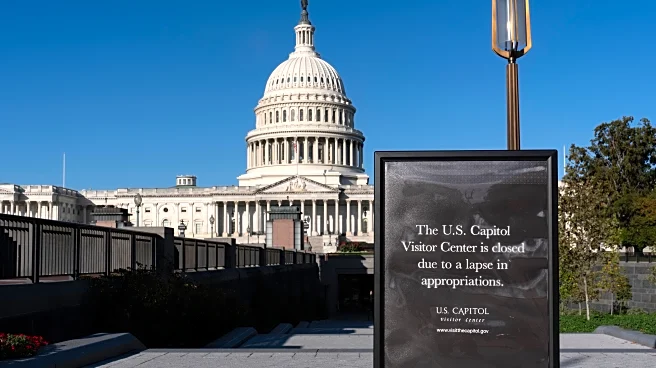What's Happening?
The administration of President Donald Trump is actively working to address the historically low birth rates in the United States by promoting healthy marriages and supporting young families. The Department of Health and Human Services, through the Administration
for Children and Families, has announced over $100 million in grants to 109 organizations across 38 states. These grants are part of the Healthy Marriage and Responsible Fatherhood initiative, which aims to foster higher birth and marriage rates. Additionally, the administration has directed the Department of Transportation to prioritize communities with higher birth and marriage rates, further incentivizing marriage and family growth.
Why It's Important?
The initiative reflects a significant policy focus on reversing declining birth rates, which have implications for the U.S. economy and demographic trends. By encouraging marriage and family formation, the administration aims to address economic challenges faced by young people, such as financial instability and educational debt, which often delay marriage. This policy could potentially lead to increased birth rates, impacting future workforce demographics and economic growth. However, it also raises questions about the role of government in personal life decisions and the effectiveness of such incentives in changing cultural and economic behaviors.
What's Next?
The grants and policy directives are expected to be implemented across the states, with organizations working to promote marriage and family stability. The effectiveness of these initiatives will likely be monitored, with potential adjustments based on their impact on birth and marriage rates. Stakeholders, including policymakers and social organizations, may engage in discussions about the broader implications of government involvement in personal life choices and the balance between incentives and individual freedoms.
Beyond the Headlines
This initiative highlights a cultural shift where marriage is increasingly seen as a 'capstone' event rather than a 'cornerstone' of adult life. The trend of marrying later in life reflects broader societal changes, including the prioritization of financial stability and personal development before marriage. This shift may have long-term implications for family structures and societal norms, influencing future policy decisions and cultural attitudes towards marriage and family life.















